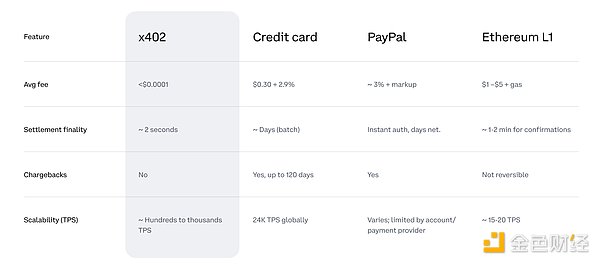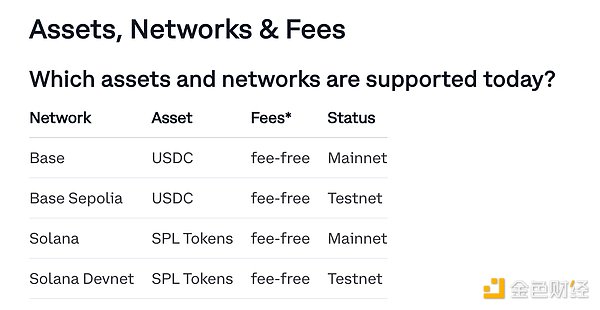x402 Hot Topic Background: The AI Economy Without Payment
The rapid development of the AI industry has driven the rise of the concept of intelligent agents, but most AI agents are still unable to perform autonomous economic activities. They can generate content, invoke models, and execute tasks, but they cannot pay for their own services or data usage. Existing payment systems rely on account systems and credit institutions, while AI cannot meet the prerequisites such as KYC, API Key management, and account binding. This deficiency prevents the AI economy from achieving a closed loop.
Following Google's launch of the Agent Payments Protocol (AP2), a solution focused on AI-powered payments, Coinbase's previously released x402 protocol has also come into the public eye, attempting to provide a more cryptographically native underlying solution to this problem. x402 is based on the long-reserved but never widely adopted HTTP status code "402 Payment Required," embedding payment logic into the HTTP request/response flow, allowing any API or intelligent agent to instantly complete value exchange upon access. Its essence is an internet-native payment standard, rather than a traditional application interface. Both AP2 and x402 aim to automate payments for AI, but the former focuses on building a centralized API payment standard, relying on a platform account system; the latter, on the other hand, centers on decentralization, embedding encrypted payments into the HTTP protocol to achieve accountless, cross-chain, real-time settlement. x402 Protocol Design: Making Encrypted Payments a Native Internet Function x402 is an open payment standard based on the native HTTP status code 402 Payment Required. Its core goal is to enable any AI, API, or IoT device to exchange value in real time, on a per-use basis at minimal cost. Technically, x402 embeds "payment" into the HTTP protocol stack—developers only need one line of code: `paymentMiddleware(amount: "0.10", address: "0x...")` to achieve the ability to make payments simply by calling an AI.

Compared to traditional payment solutions (such as bank cards, Stripe, PayPal, or OpenAI prepaid points systems), the x402's structure is closer to the underlying internet standards.
This design brings three main characteristics:
• Accountless: Payers and service providers interact through blockchain addresses, eliminating the need for a traditional account system.
• Instant Settlement: Payment and access are completed almost simultaneously, with payment times reaching "≤ 2 seconds" on some L2 networks.
• Support for Micropayments: Supports unit transactions as low as $0.0001, suitable for high-frequency, low-value scenarios such as content, data, and APIs.
Furthermore, the protocol chain and token are neutral, currently using stablecoins (such as USDC on Base) as the main settlement asset, and can be expanded to multi-chain solutions in the future.
x402 Application Prospects: From Pay-Per-Use to a Value Network for the Machine Economy
x402's greatest significance lies in enabling "machines/agents" to have economic interaction capabilities, rather than just calling functions. Its applications include: • **Pay-per-Use:** AI models, data APIs, and computing power entry points can be billed based on the number of uses, without the need for subscription. • **Autonomous Payment by Intelligent Agents:** Intelligent agents can freely call services and pay, without the need for manual pre-payment or account management. • **Micro-payment for Content and Data:** Paying by article, by second, or by data volume becomes possible, breaking through the traditional advertising/subscription model. • **Machine-to-Machine (M2M) Payment:** IoT devices and automated systems can complete spontaneous value exchange through x402. From an industry perspective, with the rise of the AI Agent economy, these protocols provide new "value layer" infrastructure. The application scope of x402 is not limited to payments. Its core value lies in enabling machines to have economic interaction capabilities. x402 Development Trends and Real-World Challenges x402 is currently still in its early promotion stage. Coinbase, through its numerous partners and the very popular Ethereum L2 Base network and USDC stablecoin ecosystem, is promoting it as an AI-native payment standard. If this standard is widely adopted by developers, x402 has the potential to become the "TCP/IP of the AI economy," serving as the value transfer protocol for all intelligent agents interacting with the API layer. However, x402 also faces significant challenges. The regulatory and cross-border compliance issues surrounding stablecoins are not yet fully clarified; HTTP 402, as a network layer standard, still requires widespread adoption by mainstream developers and platforms; and on-chain micropayments need further optimization in terms of performance and cost. Overall, these issues appear to be transitional obstacles in the early stages of infrastructure adoption rather than fundamental hindrances. Currently, x402 is primarily in the proof-of-concept and developer testing phase, lacking truly essential application scenarios, and large-scale commercialization will take time.
x402 Ecosystem Layout and Investment Perspective
•Ecosystem Builders:
x402's long-term development is inseparable from the improvement of ecosystem construction and investment synergy. At the ecosystem level, three key directions need to be focused on:

Ecosystem Construction Layer: Major institutions such as Coinbase and Circle are the core driving force behind x402's standardization and industrial implementation.

Based on the previous announcement of Binance Alpha delisting Solana Memecoin, it can be speculated that Binance will still exclusively support related projects on BNB Chain in this sector, while Coinbase's listing pace is expected to remain relatively cautious.
 Anais
Anais
 Anais
Anais Edmund
Edmund Huang Bo
Huang Bo Huang Bo
Huang Bo JinseFinance
JinseFinance Alex
Alex Aaron
Aaron Beincrypto
Beincrypto decrypt
decrypt Bitcoinist
Bitcoinist